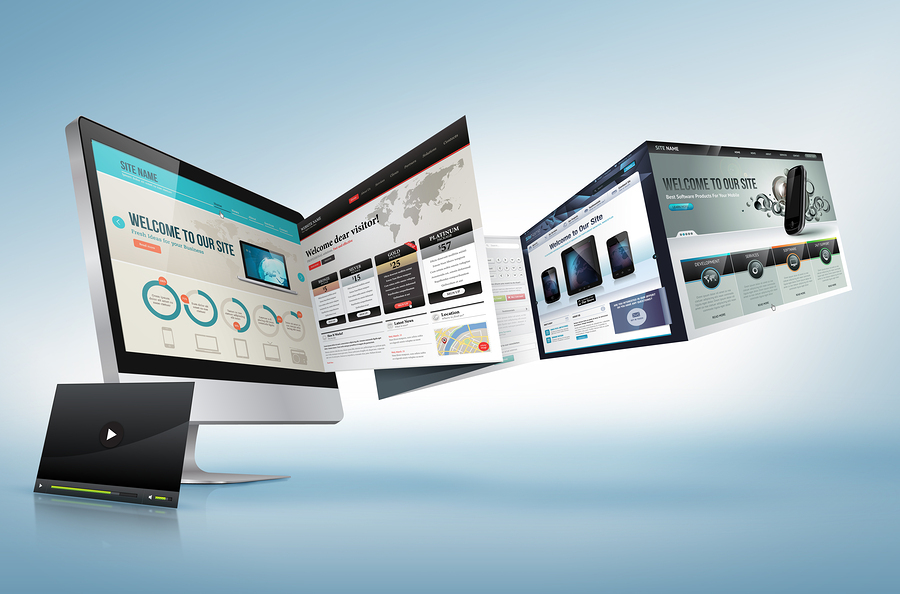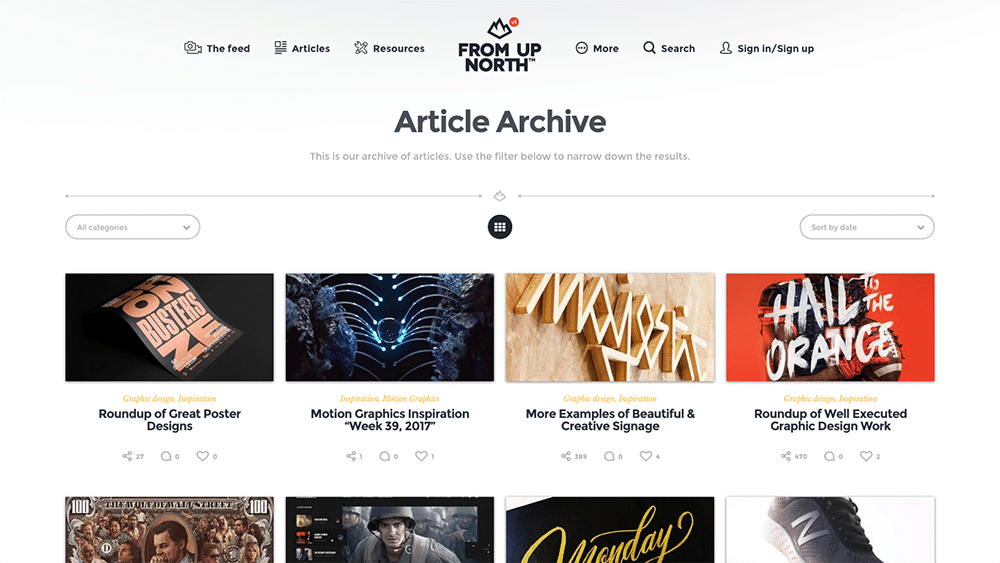How to Improve Your Website Design for Better Conversion Rates
How to Improve Your Website Design for Better Conversion Rates
Blog Article
Modern Internet Site Style That Catches Attention and Transforms
In an increasingly electronic landscape, modern-day website design has actually become a critical variable in recording individual attention and driving conversions. By purposefully utilizing visual hierarchy, receptive layouts, and involving interactive components, developers can create experiences that not just attract visitors but additionally help with significant interactions. In addition, effective call-to-action approaches play an important function in directing individuals toward wanted end results. As we check out these crucial parts, it becomes clear that comprehending their interaction can substantially affect an internet site's efficiency and user fulfillment. What are the vital elements that genuinely make a distinction?
Value of Visual Hierarchy
Visual hierarchy is an essential aspect in website design, as it overviews customers' attention and improves their overall experience. By strategically arranging material, developers can route individuals to the most essential details initially, therefore boosting interaction and improving usability. Reliable aesthetic pecking order utilizes numerous methods, including size, contrast, spacing, and shade. Larger aspects naturally attract the eye, while contrasting colors can stress crucial messages, making them stick out among even more controlled elements.
Including a sensible flow in material arrangement is necessary; for circumstances, positioning the most important information on top of a page cultivates prompt recognition. Constant usage of typography, such as differing font sizes and designs, aids develop a clear web content structure. This company not only aids in navigation however additionally builds trust fund, as users really feel a lot more comfy when they can conveniently find what they are searching for.
Eventually, a well-executed aesthetic hierarchy not only enhances aesthetic charm yet additionally substantially affects user behavior. By prioritizing vital components and making certain a seamless experience, designers can effectively convert site visitors into clients, reinforcing the importance of this fundamental design principle in modern internet site advancement.
Responsive Style for All Gadgets
Producing a smooth experience throughout different gadgets is necessary in today's electronic landscape, where individuals gain access to web sites from tablet computers, smartphones, and desktops alike. Receptive design is a vital technique that guarantees web sites adjust fluidly to different screen resolutions, sizes, and orientations. By employing versatile grids, pictures, and CSS media questions, designers can create designs that preserve aesthetic stability and functionality, no matter the device being made use of.
The relevance of responsive design prolongs beyond looks; it straight influences individual involvement and conversion rates. An internet site that works well on all tools urges longer gos to and decreases bounce rates, as individuals are most likely to connect with material that is easy to browse. Furthermore, online search engine, specifically Google, focus on mobile-friendly websites in their positions, making receptive design a crucial component of seo (SEO)
Incorporating responsive design not just improves customer experience however likewise improves the growth process. By producing a single website that functions throughout devices, businesses can conserve time and resources compared to developing different mobile and desktop variations. Eventually, responsive design is an essential approach for modern-day site layout, making certain ease of access and satisfaction for all individuals, no matter their device.
Engaging Interactive Elements
While a receptive style prepares for a functional site, integrating engaging interactive elements is critical for capturing customer focus and promoting deeper connections. Website Design. Interactive components, such as animations, tests, and clickable infographics, produce an extra dynamic user experience, encouraging site visitors to invest more time on the website
Integrating interactive functions can also guide customers via facility info, making it much easier to absorb web content. Interactive sliders can illustrate item variations, while ingrained videos can offer demos or reviews that resonate even more than static pictures or message. In addition, gamification methods, like rewards for engaging or finishing tasks with web content, can improve user motivation and retention.
Efficient use interactive elements not just enriches the user experience however can additionally cause greater conversion prices. By making communications satisfying and insightful, services can cultivate a sense of commitment and depend on with their target market. However, it is necessary to stabilize interactivity with performance; excessively complicated features might hinder site rate, adversely influencing user fulfillment. Inevitably, integrating well-designed interactive components can significantly elevate a website's effectiveness, driving interaction and conversions in today's affordable digital landscape.
Streamlined Navigating Practices
Reliable navigating is a keystone of any effective website, as it straight influences individual experience and web content accessibility. Structured navigation practices guarantee that individuals can easily situate details, boosting their communication with the site. visit A well-structured navigating food selection ought to be intuitive and easy, generally including a restricted number of main categories to prevent frustrating visitors.
To achieve structured navigation, designers should prioritize a hierarchical framework that rationally organizes material. Implementing breadcrumb routes can supply individuals with context about their current area within the website, permitting seamless backtracking. Additionally, using drop-down menus can effectively save area while still giving access to subcategories.
Receptive layout is vital, as navigation should be practical across all devices (Website Design). Mobile customers, specifically, gain from touch-friendly food selections and collapsible areas that keep usability without compromising appearances

Reliable Call-to-Action Approaches
A well-crafted call-to-action (CTA) is crucial for guiding customers toward wanted results on a site, as it motivates them to involve with material or buy. To maximize their performance, CTAs should be clear, engaging, and tactically positioned throughout the site.
First, make use of action-oriented language that connects seriousness or worth, such as "Get going," "Join Currently," or "Insurance claim Your Price cut." This language not only inspires customers however additionally sets clear assumptions concerning the next actions.
2nd, consider style components; CTAs need to stick out aesthetically through contrasting colors, adequate whitespace, and prominent positioning. A button that is very easy to see and click rises the possibility of individual communication.
Furthermore, customizing CTAs based upon user behavior or demographics can substantially improve involvement. Customized messages resonate more with individuals, driving higher conversion rates.

Conclusion
To conclude, contemporary internet site design emphasizes the assimilation of visual pecking order, receptive formats, engaging interactive elements, structured navigation, and efficient call-to-action methods. These parts jointly enhance customer experience, ensuring that visitors remain engaged and inspired to explore material better. By focusing on these layout concepts, services can considerably enhance individual retention and conversion prices, eventually causing better success in the digital landscape. The continuous evolution of web design underscores its crucial function in efficient on the internet interaction and advertising.
In a progressively electronic landscape, contemporary site style has arised as a pivotal factor in recording individual attention and driving conversions.Aesthetic hierarchy is a crucial element in internet site layout, as it overviews individuals' interest and enhances their total experience.The value of responsive layout prolongs past site appearances; it directly impacts individual engagement and conversion rates.Incorporating receptive design not just enhances customer experience yet likewise streamlines the growth process. Eventually, receptive style is a fundamental method for modern web site design, ensuring accessibility and fulfillment for all users, no matter of their tool.
Report this page